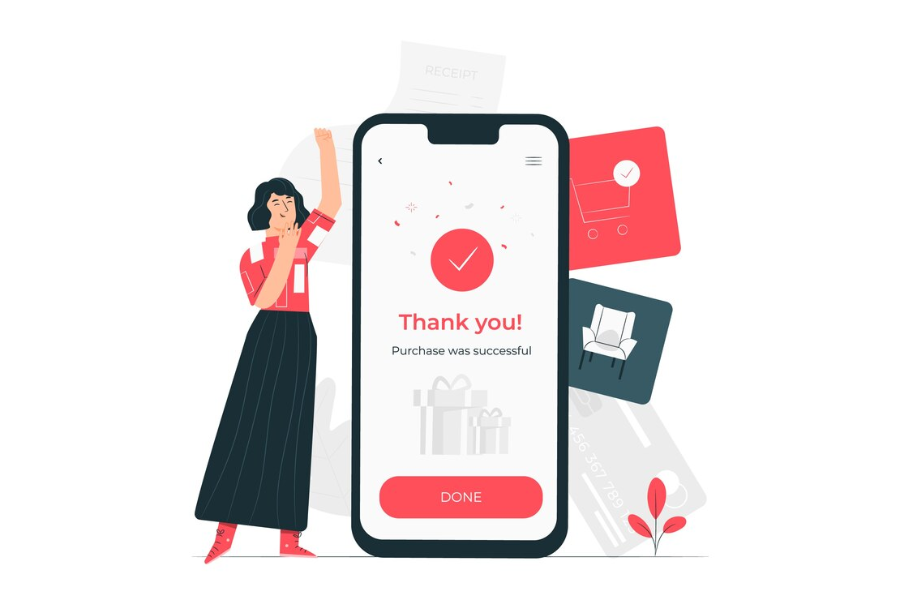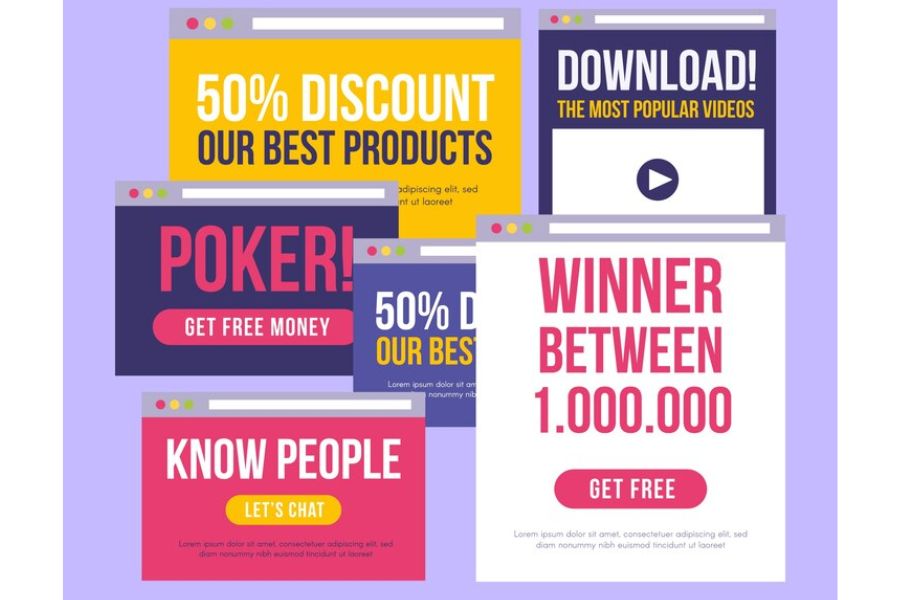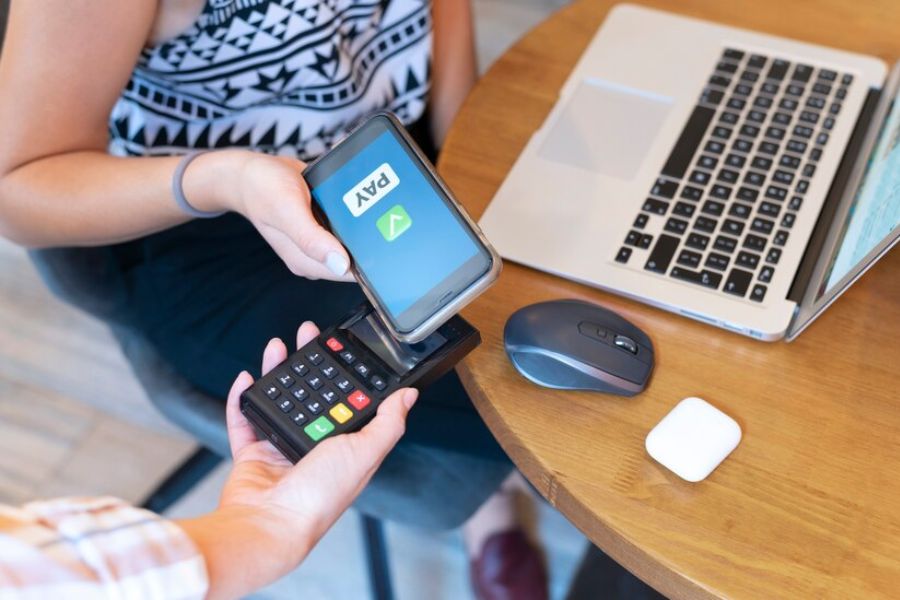
Source: Freepik
Even if you get the entirety of your website right, a bad checkout process can put off your customers for good, negating all those advantages. In this case, all of the efforts you invested into developing a seamless user experience for your home page, blogs, and product pages will be in vain.
Cart abandonment because of a bad checkout process is a real and persistent issue. After all, who would want to deal with that when there are so many other options around?
If you don’t want your polished website to go to waste, you need a snappy checkout process that seamlessly converts audiences into paying customers. The best way to do that is to avoid these costly mistakes.
Learn how to create a stellar, high-converting checkout page with these tips.
Why Is an Optimized Checkout Form Important?
First, let’s discuss some numbers.
Data by the Baymard Institute, a user experience research company, revealed the average global cart abandonment rate will be 70.19% in 2024. And their reasons? Five out of ten have something to do with the checkout process itself.
These reasons are as follows:
- Customers needed to make an account to proceed to checkout (26%)
- The website didn’t seem trustworthy (25%)
- The checkout process is too bothersome to complete (22%)
- The website frequently crashed or presented errors (17%)
- The payment method they preferred wasn’t available (13%)
These are all reasons that, in some way or another, include elements of the checkout process.
The consequences of not optimizing checkout can be monumental. Say your average profit per customer is $100, and you have 30 customers a month. In total, this makes about $3000 in monthly revenue. By turning 20% of abandoned carts into customers, you earn $1400 more that month, for a total of $4400.
But how can you turn those abandonments into conversions? Simply avoid the following mistakes.
1. Checkout Forms That Are Too Bothersome To Complete
Online shopping is about convenience—meaning speed and simplicity. Thus, shoppers need a simple checkout process. Having a checkout process that’s too long and complicated flies in the face of what customers want.
But how long is “too long”? And what is “too complicated”?
According to more in-depth research by the Baymard Institute, you only need 8 form fields in your checkout forms (yet most sites in 2024 have 11.3), and only 5 steps to complete the checkout. If completing an order on your site exceeds those ideals, you’ve got to make some design changes.

Source: Freepik
2. Confusing or Unclear Product Information and Pricing
You need to present clear information every step of the way.
If customers don’t understand the item or price, they’re more likely to regret their purchase and return the items. Worse, they’re going to feel cheated about it and will even likely tell their friends and family about their experience with your store.
Moreover, if customers can’t easily understand the differences between different products, deciding which one to buy is difficult. They’re more likely to fail to complete checkout at this stage, ultimately reducing conversions.
So, what should you do instead?
Ensure that product descriptions, images, promo codes, and prices are accurate, and remove any misleading elements such as hidden fees during checkout. More importantly, ensure that the prices are clear. Have them displayed prominently in the relevant pages, but most importantly in the checkout page.
When customers fully understand what they are buying, they are more likely to proceed with the purchase.
3. Lack of Transparency and Trust Signals
Say you go into a lawyer’s office for some important business, but the guy sitting behind the table is wearing a plain T-shirt, sweatpants, and a cap. Worse, the office looks like a college teenager’s study desk; you can’t find any diploma or certification anywhere, and it smells suspiciously like old cheese.
You’d walk right out. Nothing in that room makes you trust the person sitting behind the desk. There are no trust signals, and the office is not transparent about its intentions.
These two elements are also essential for your ecommerce website – they show that your business is trustworthy and worth putting money into. Customers who trust a website are likelier to make a purchase and recommend it to their friends.
These trust and transparency signals could be:
- Trust badges
- Awards and affiliations
- SSL certificates
- Clear contact details
- Customer testimonials or reviews
If your website lacks trust signals, customers may hesitate to provide their information and complete their purchase. They’ll walk right out. Instead, add the aforementioned elements. Sprinkle them throughout your website, but most importantly, concentrate them on your checkout pages.
4. Limited Payment Options and Security Concerns
Limited payment options frustrate customers during the ecommerce checkout process. This is one of the factors listed in the Baynard Institute study; 13% of customers cite this as a reason for abandoning their cart.
You’ve surely experienced it as well: not having your preferred payment option is a frustrating experience, especially when you’ve set your heart on a product.
Security concerns are also tied into this—payment processing needs to be both convenient and secure. In the survey, 25% of customers said they didn’t continue buying because the website didn’t seem trustworthy.
When people can’t pay how they prefer and are not given the assurances they want, customers will simply abandon their purchase and go somewhere else. How can you prevent this?
There are simple fixes. Make sure your systems cover all the popular payment methods, especially the ones your target customers prefer. Also, make sure these payment gateways are PCI DSS compliant and feature all of the advanced security features they should have.

Source: Freepik
5. Technical Issues and Errors
A bad website can seriously disrupt the ecommerce checkout process.
Nothing is more frustrating than filling out a form only to encounter an error at the final step. Customers will be frustrated and abandon their purchase if your website crashes or loads slowly during checkout.
Aside from driving customers away during checkout, technical issues lead to potential data privacy violations.
Website crashes are an indicator of less-than-ideal website maintenance. If you can’t keep a page serviceable, the finer points of data security and network maintenance will likely escape your attention, too.
But worse than that, crashes and bugs during the checkout process are also a gateway to data breaches. Errors while checking out might inadvertently reveal customers’ information or even transmit sensitive information (like credit card details) unencrypted.
Constant vigilance is the key. Regularly test your checkout process for errors on all devices and browsers, then immediately fix the issues if there are any.
6. Poor Mobile Optimization and Usability
Checkout processes that aren’t user-friendly on mobile devices are a pain for customers, especially when combined with a complicated checkout process. Poor optimization makes it challenging to navigate their purchases on mobile devices, as they struggle with small text, buttons that are hard to tap, or pages that load slowly.
How can business owners prevent this from happening?
- Always test for responsive design. Ensure your checkout page uses a responsive design that adjusts seamlessly to different screen sizes. Make sure navigation is easy with larger buttons, fewer fields, and high readability. Test your page on various devices to confirm it offers a consistent experience.
- Offer mobile-friendly payment options. Payment processors like Apple Pay, Google Pay, and PayPal will speed up the checkout process and make order completion easier for customers.
- Ensure fast loading times. Mobile users are often on slower networks. Optimize your checkout page for speed by compressing images, minimizing code, and using faster hosting.
Mobile e-commerce makes up more than half (60%) of all e-commerce sales worldwide, so not optimizing for mobile will hurt your business. You’re losing a large chunk of potential sales.
Customers expect a smooth experience regardless of their device. If they encounter difficulties on their smartphone or tablet, they’ll abandon their cart and find a more user-friendly alternative.

Source: Freepik
7. Distractions and Unnecessary Elements
Too much of anything is never a good thing, which also applies to your checkout page.
Unnecessary elements divert a shopper’s attention from completing their purchase, making them more likely to abandon their cart. This includes
- Ads
- Pop-ups
- Excessive links
- Extraneous product details
- Pictures, etc.
Excessive elements that slow down page loading times are critical to ecommerce. If your customers are faced with a loading page, they’ll be distracted by something more active.
Your checkout page has only one goal: to finalize the sale. Anything that detracts from this goal is a distraction and must be trimmed off.
Thus, keep the design of your checkout page clean and minimalistic. Remove anything unnecessary and use clear progress indicators to show where customers are in the process. Oh, and don’t use pop-ups.
Best Practices for Optimizing Ecommerce Checkout Pages
So, what should you do if you want to take your checkout processes to the next level? Here are the best practices that will enhance your checkout process and encourage more successful transactions:
- Simplify checkout forms and steps. Make it easy to complete purchases by reducing the number of steps. Only ask for essential information and offer an optional guest checkout. If you can, use a progress indicator.
- Always include a summary of products at checkout. Ensure that all product descriptions are prominent and not misleading. Avoid hidden fees or surprises during checkout.
- Build trust and credibility every step of the way. Display trust signals throughout your site, most prominently on the checkout page. Offering customer support and guarantees, like a secure payment process, also works.
- Offer multiple payment methods. Provide various payment options to accommodate your target customer’s preferences, and then ensure that these methods are secure. Always invest in robust security measures.
- Ensurе site reliability at all times. Regularly test your checkout process to identify and fix any technical issues or bugs. Slow loading times, errors, or crashes frustrate customers, and frustrated customers abandon ship.
- Optimizе for mobile devices. Ensure that buttons, forms, and text are easy to interact with on smaller screens and touch interfaces. Always test every new functionality or feature for responsiveness, especially on checkout.
- Eliminatе all distractions. Avoid distractions like pop-up ads, unrelated product recommendations, or excessive navigation options during checkout. Focus only on the essential steps needed to complete the purchase.
At the core of all your checkout optimization is user experience. Keep in mind that all of these measures are just to keep your customer safe, secure, and satisfied. As long as you build your e-commerce website and its associated process with this in mind, your business will grow.

Source: Freepik
Tools and Resources for Improving Ecommerce Checkout Pages
We’ve discussed methods that simplify the entire process, making checkout more user-friendly. Good customer experience drives conversion and reduces abandonment.
To implement the best practices above, you must use various methodologies, technical strategies, and tools.
Methodologies and technical know-how vary from business to business, depending a lot on your capabilities and what effective marketing strategies you decide to prioritize. But the tools you use are all the same. Thus, knowing the best tools immediately levels up your checkout optimization process.
Here are the most important ones to keep in mind.
A/B Testing and Analytics Tools
A/B testing and analytics tools compare two web page versions to see which one performs better. By changing one element at a time and analyzing how your users react, these tools help you understand what works best for your audience.
Testing tools are invaluable for improving e-commerce checkout pages. You can experiment with different features to determine what resonates best with your audience. Specifically, experiment with these key elements:
- Check out form page layouts
- Website content
- Content messaging
- Multiple payment gateways
- Calls to action
- Form field validation
You can use a couple of services to A/B test, and knowing the best one for your business is crucial. Consider these:
- Google Optimize. This free tool integrates with Google Analytics, meaning you can analyze results directly within your existing analytics framework. It’s user-friendly and powerful, a great choice for businesses of all sizes with only basic needs.
- Optimizely. Known for its robust features, Optimizely allows you to create and run experiments on your checkout page. It provides detailed reports and insights, helping you understand which changes have the most significant impact.
- VWO (Visual Website Optimizer). VWO offers a comprehensive suite for A/B testing, multivariate testing, and more. Its visual editor makes it easy to set up tests without coding, making it accessible for non-technical users.
When conducting A/B tests, making one change at a time is crucial. This allows you to identify the specific modification responsible for the performance boost (or decline). A/B testing allows for data-driven decisions, so you don’t optimize blindly.
Heatmaps and User Testing Tools
Heatmaps visualize where users are clicking, moving their cursors, or spending the most time. They show you what elements of the checkout process your customers like or what needs attention.
Meanwhile, user testing tools involve real users providing feedback on the checkout process. They refine the checkout experience based on genuine user feedback by connecting you with real users who will go through your site manually and send any comments they might have. There are also automation options.
Some of the best include:
- Hotjar. This suite of analytics tools shows where users click, how far they scroll, and how they navigate through your checkout process.
- Crazy Egg. This popular optimization tool offers heat maps, scroll maps, and user recordings.
- UserTesting. This platform gets you videos of real users interacting with your site while they provide feedback, invaluable for understanding the user’s perspective.
These tools give you a deeper understanding of your users. Heatmaps show actual behavior, while user testing tools show perceptual behavior. With these two in your arsenal, optimizing the finer points of your checkout process is easier than ever.

Source: Freepik
Payment Gateways and Processors
These tools are critical components of the ecommerce checkout process, facilitating secure and convenient transactions by integrating with various payment methods.
By having good payment gateways, you cater to whatever payment processor your customers might need, ensuring their smooth experience. You also display trustworthiness by having a popular, trusted processor brand name on your side.
All these minimize cart abandonment.
Consider these most widely-used payment gateways.
- PayPal
- Stripe
- Braintree
Customers need to trust the system to provide their financial information without worry. Ideal gateways and processors should offer a seamless, intuitive, secure checkout experience to reduce cart abandonment.
Checkout Optimization Plugins and Apps
These are tools and software solutions designed to improve the efficiency, user experience, and conversion rates at the checkout stage of your online store. They offer a range of features and enhancements that make the checkout process smoother, faster, and more user-friendly.
Also, they include the following:
- Single-page checkout instead of multi-page checkout;
- Abandoned cart recovery to remind customers to complete their purchase;
- Custom checkout forms for one-time purchases and to increase average order value;
- Shipping fees calculators;
- Tax calculators to calculate international taxes based on different factors;
- Guest checkout to avoid forced account creation;
- Currency conversion tools.
Incorporating them simplifies the entire checkout process, avoids unexpected costs, and reduces customer friction. This increases efficiency and user-friendliness, boosting conversion rates and customer loyalty.

Source: Freepik
Ecommerce Platform Features and Integrations
Most ecommerce platforms come equipped with various pivotal features for enhancing a localized checkout experience.
Some integrations that can improve your checkout page are:
- Custom checkout forms. Simplify the process using custom forms and one-page checkouts to collect essential customer information without overwhelming users with excessive fields. This streamlines the experience for customers.
- Multiple languages support and payment. Cater to a broader audience by offering support for various languages and payment options. Ensure your customers can comfortably select their preferred payment method and billing address.
- Shipping carrier integration. Seamlessly integrate with shipping carriers like USPS and FedEx. This simplifies the calculation of shipping costs and ensures products are promptly delivered to the correct shipping address.
- Email marketing integration. Connect with email marketing providers like MailChimp and Constant Contact. This integration lets you send discount codes, abandoned cart recovery emails, and other messages to improve the buying process.
These features and integrations can help you streamline business operations and offer customers a more personalized shopping journey. Tailor the checkout experience to meet the specific needs of your audience and improve customer satisfaction.
Frequently Asked Questions
Why Is Optimizing the Checkout Page Important?
Optimizing the checkout page directly impacts conversion rates. A smooth, user-friendly checkout process reduces cart abandonment, turning those into sales and adding to your revenue.
What Are Common Checkout Page Mistakes in Ecommerce?
The most common checkout page mistakes make the customer experience worse. These include lengthy and complex checkout forms, unclear product information, and everything discussed above. To fix these issues, prioritize customer experience above all else.
What Payment Options Should I Offer To Increase Conversions?
Offer multiple payment gateways such as credit cards, PayPal, Apple Pay, and Google Pay. Providing diverse payment options reassures your customers and prevent them going somewhere else.